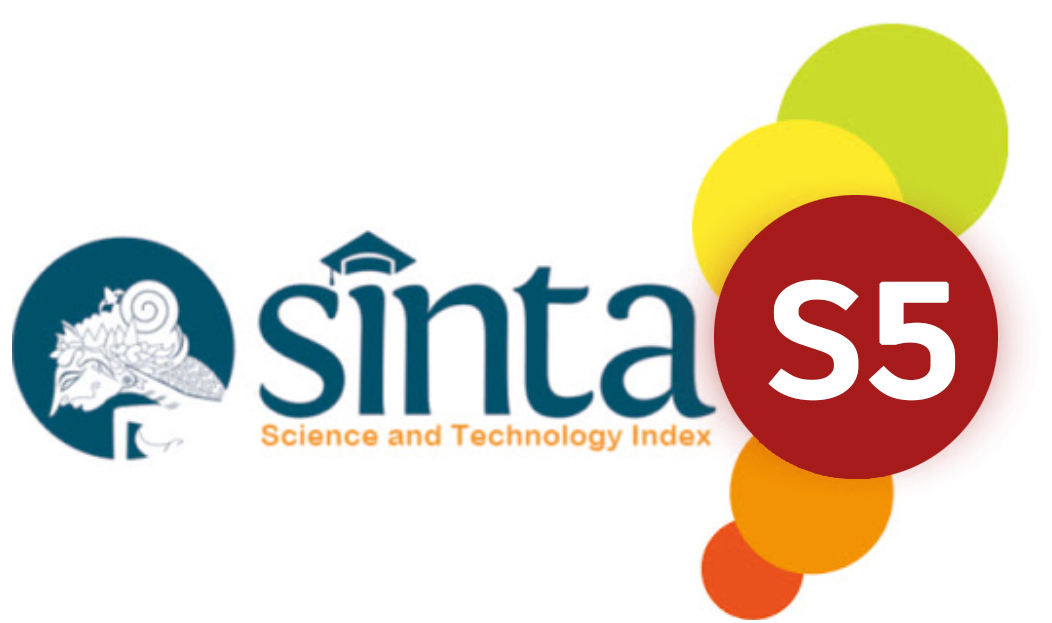Analisis berpikir kreatif dalam menyelesaikan masalah barisan dan deret aritmatika dengan metode open-ended
Abstract
This study aims to determine students creative thinking skills in solving arithmetic progression and series problems with the open-ended method. The research method used is a qualitative method with a case study approach. The selection of subjects uses a purposive technique that is based on certain characteristics. The subjects in this study were 3 junior high school students selected in the category of high matematical abilities. Methods of collecting data using tests, interviews, field notes, and documentation. Data analysis techniques used the triangulation method to gain deeper understanding of the subject under study. Based on the results of the study show the ability of creative thinking of students because it meets the three indicators of creative thinking, namely fluency: students are able to calculate smoothly and solve problems correctly, flexibility: students are able to find other ways to find the same results, novelty: students are able to think in new ways and different from other subjects.
References
Febriyanti, U. A., Hobri., & Setiawani, S. 2016. Tingkat Berpikir Kreatif Siswa Kelas VII dalam Menyelesaikan Soal Open-Ended pada Sub Pokok Bahasan Persegi Panjang dan Persegi. Jurnal Edukasi UNEJ, Vol 3: 5-8.
Firdausi, Y. N., Asikin, M. & Wuryanto. 2018. Analisis Kemampuan Berpikir Kreatif Siswa Ditinjau dari Gaya Belajar pada Pembelajaran Model Eliciting Activities (MEA). Prisma 1, Prosiding Seminar Nasional Matematika. 239-247. Diakses di https://journal.unnes.ac.id/sju/index. php/prisma/
Kang Sup, Lee., Dong-jou, Hwang., & Jong Jin, Seo. 2003. A Development of The Test for Mathematical Creative Problem Solving Ability. Journal of the Korea Society of Mathematical Education Series D: Research in Mathematical Education Vol 7: 163–189.
Koriyah, V. N., & Harta, I. 2015. Pengaruh Open-Ended terhadap Prestasi Belajar, Berpikir Kritis dan Kepercayaan Diri Siswa SMP. PYTHAGORAS: Jurnal Pendidikan Matematika Vol 10: 95-105.
Laela, I. 2017. Tingkat Kemampuan Berpikir Kreatif Siswa dalam Menyelesaikan Soal Barisan dan Deret Kelas XI APK 3 SMK PGRI 1 Tulungagung Tahun Ajaran 2016/2017. Skripsi tidak dipublikasikan. Tulungagung: Institut Agama Islam Negeri (IAIN) Tulungagung.
Lince, R. 2016. Creative Thinking Ability to Increase Student Mathematical of Junior High School by Applying Models Numbered Heads Together. Journal of Education and Practice Vol 7: 206-212.
Mepnews. 2016. Peringkat Pisa Indonesia Naik tapi Masih Sangat Rendah (Online). (http://mepnews.id/2016/12/07/peringkat-pisa-indonesia-naiktapi-masih-sangat-rendah/,diakses 17 November 2017).
Mrayyan, S. 2016. Investigating Mathematics Teachers Role to Improve Students Creative Thinking. American Journal of Educational Research Vol 4: 82-90.
Siswono, T. Y. E. 2011. Level of Student’s Creative Thinking in Classroom Mathematics. Educational Research and Review Vol 6: 548-553.
Sugiyono. 2012. Metode Penelitian Kuantitatif, Kualitatif dan R & D. Bandung: Alfabeta.
Widoyoko, S. E. P. 2017. Teknik Penyusunan Instrumen Penelitian. Yogyakarta: Pustaka Pelajar.





